I did not ask a rabbi in advance (or since) if it is ok or if it is a problem to watch this, as I do not see any halachic problem with it, though I might be wrong about that. Obviously, I was there as a tourist and not as a participant.
The Shomronim, or Samaritans, live in mostly two communities - one in Holon and the main community being in the Shomronim village near Shchem on Har Grizim. The community altogether numbers 800 people. When asked how they can survive with just 800 people, and in 50 years won't they be completely gone, they answered that in 1917 they were just 150 people and people said the same thing then, but now in 2014 they are 800 people.
We got there early enough to wander around a bit. There are some misconceptions about the Shomronim. For example, in the past I had seen pictures from other people who went, and one thing always pointed out is the "mezuza" on the outside wall of the house - a flat tablet embedded into the wall with something engraved on it. That is incorrect, according to what we were told on Sunday afternoon. We noticed such a tablet on the wall outside a house, and said, that is the mezuza. One of the Shomronim passing by said that is not correct. he explained the mezuza is inside the door, not on the outside. That tablet is similar to a "birkat habayit" - he read it to us and, according to what he said it is a blessing for the house and says who built the house (not the kabblan, but who the head of the house was) and in what year.
The Shomronim are very friendly people and very happy to talk about their customs, traditions, and lifestyle. We spoke, throughout the evening, in great length to a number of different Shomronim. Most Shomronim speak 4 languages: English, Hebrew, Arabic and Shomronite (ancient Hebrew which sounds like a mixture of Hebrew, Aramaic and Arabic). Their books and Torahs are written in Hebrew, but using ancient Hebrew script - they never made the switch to Ashurit script like we did. They read the religious texts in ancient Hebrew which sounds like some mixture of Arabic and Yemenite - if you listen carefully you can make out some of the words. They are fully integrated into Israeli society, in the sense that they serve in the army, they go to school, they work in most professions.. they say they have no crime rate in their community and no intermarriage with non-Jews, though some do marry Jews (though not many).
When we asked "Ata Yehudi?" - are you Jewish? - the answer was not a straight yes or no. The answer was - do you know why you are called "yehudi"? It is because you are from the Tribe of Judah. We are not yehudim because we are not form Yehuda, they each answered. To explain, they claim to be from the tribes of Menashe and Efraim (in addition to their Kihanim and Leviim from the tribe of Levi), and are therefore part of bnei yisrael, but not yehudim.
They do not wear tefillin and tzitzit, at least not on a daily basis. They are not against it, but consider it too spiritual. They do separate truma and maaser and give it as obligated, to the kohen, levite, etc. It was strange as I always thought they are pure "written torah" people, but it seems they do have some traditions of their own that are oral traditions, on how to do things.
They claim they stuck with the original torah and they perform it exactly as described in the torah, and have done so for thousands of years, while it is us, the yehudim, who changed things. According to them, "your rabbis" made changes when they wanted to - for eexample, King david was from a Moabite woman, as the rabbis explained a Moabite cannot become Jewish and marry into the community, but a Moabite woman can, because it says "Moavi" and they darshan "moavi v'lo moavia". So, the Shomroni said, is your wife allowed to have an extramarital affair because it says "lo tinaf" but does not say "lo tinafi"?
They shechted their korbanot pesach in what was like a ditch lined with stone. They said that is the mizbeiach. When I asked how come the altar isnt a raised structure, they explained that there are different types of altars. some are structures, like the mizbeiach haktoret, while the mizbeiach adama is like this. On the other hand, they did use large skewers made of pomegranate wood for holding and burning the slaughtered lambs, which if I am not mistaken is only mentioned in tradition and the oral Torah. They also smeared a dab of blood on their foreheads immediately after slaughtering the korban. I asked why and did not get a good explanation - something about being similar to the smearing of blood on the lintel and doorposts.
The people we spoke to were very smart and knowledgeable. they knew Tanach better than me (not saying much) - they knew it perfectly, quoting from all parts. They also knew many of our traditions (of the ones that came up in the discussions) and sources for them.
They believe that that area is holy. Har Grizim is where the brachot were given to the children of Israel, and obviously that makes it holy. There is no mention in the Torah of Jerusalem, and no mikdash. Har Grizim is the holiest place mentioned in the Torah.
feel free to ask questions about the Shomronim in the comments, and if I have answers I will respond. We chatted with a number of them over the course of the evening and got a lot of information, so I might be able to tell over what I heard, and it might answer your questions.
Here are pictures from the event, in no particular order. I did not take pictures of the shechita. I could not see it well as there was a large crowd and everyone was standing for that and I did not have a good view of it at that point.
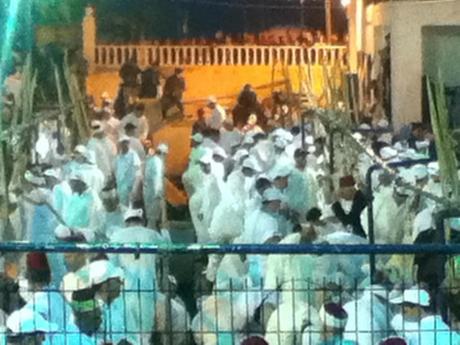
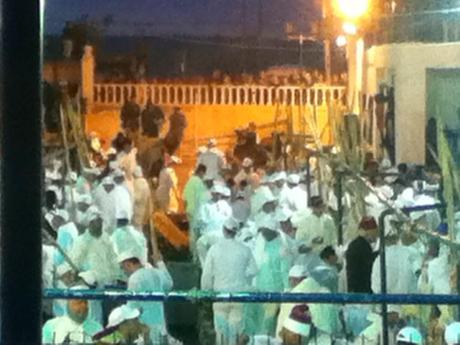
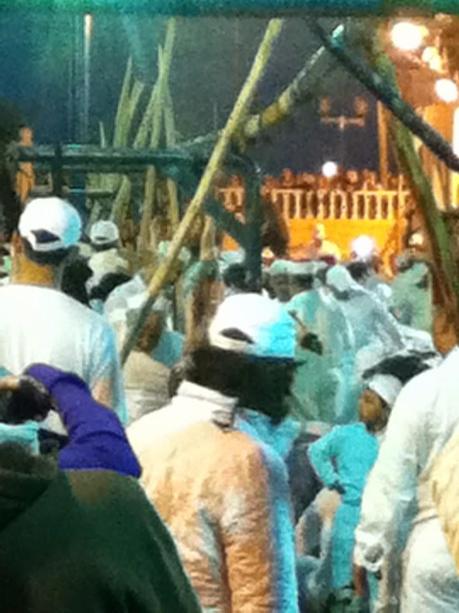
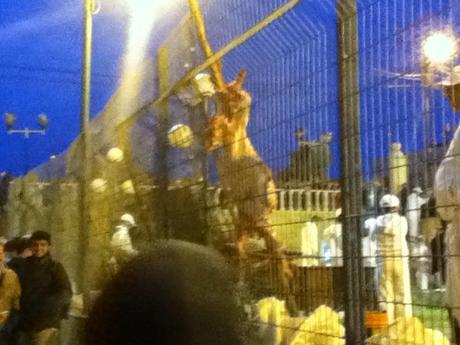
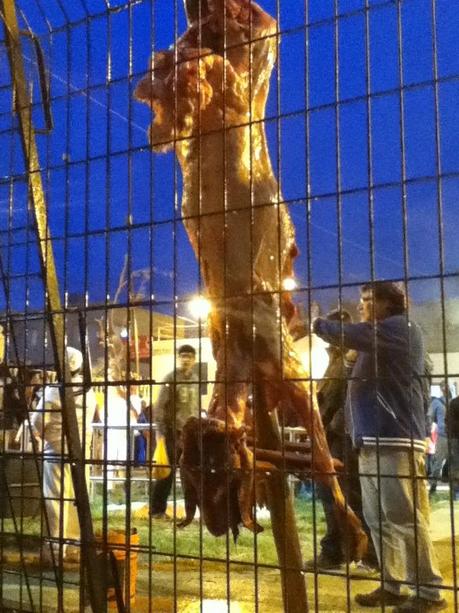
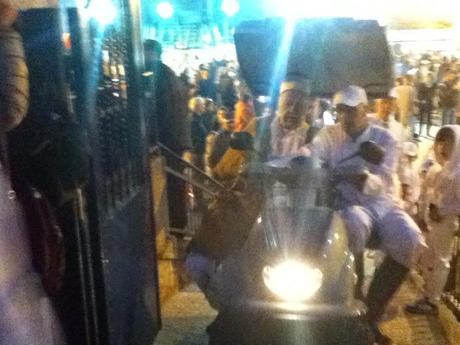
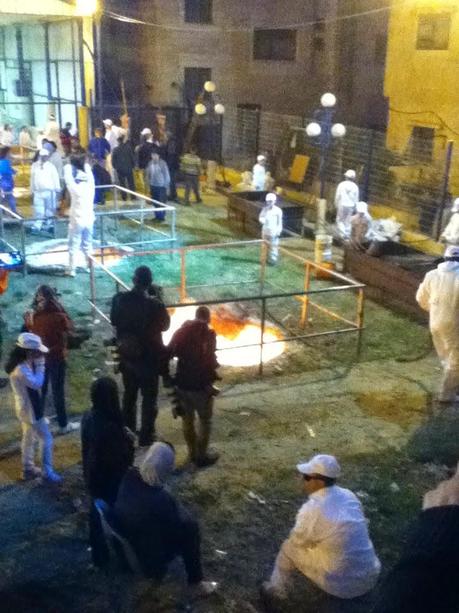
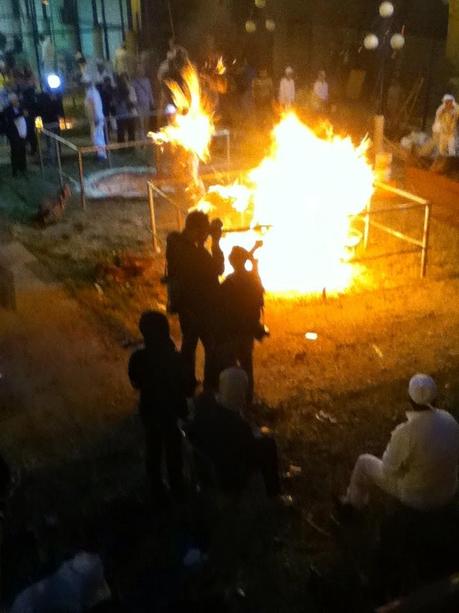
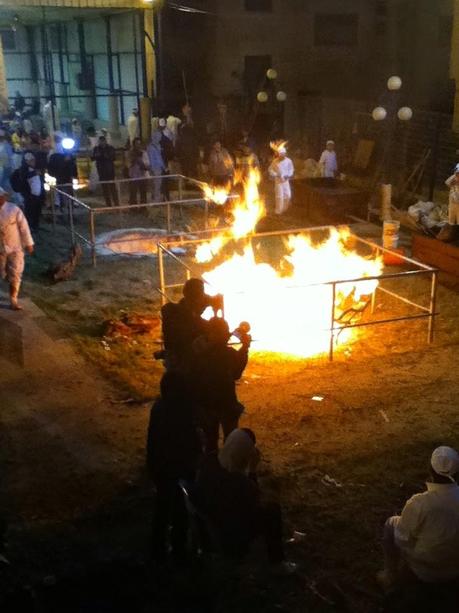
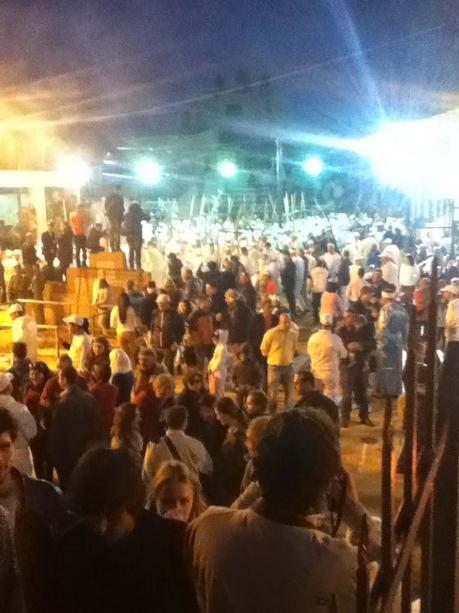
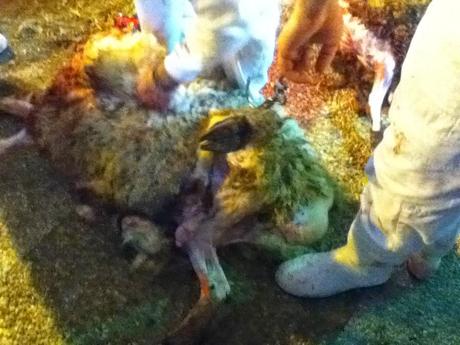
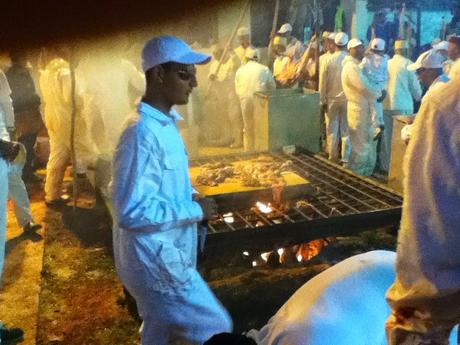
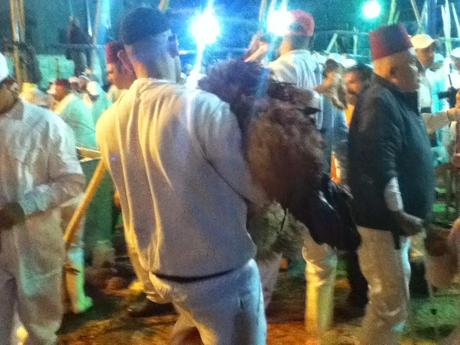
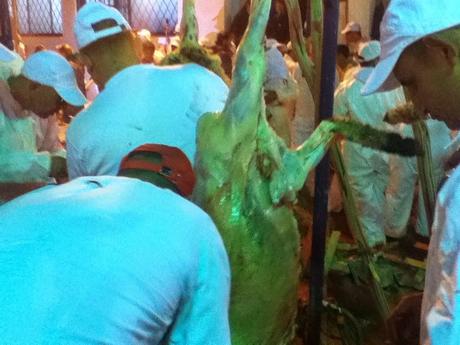
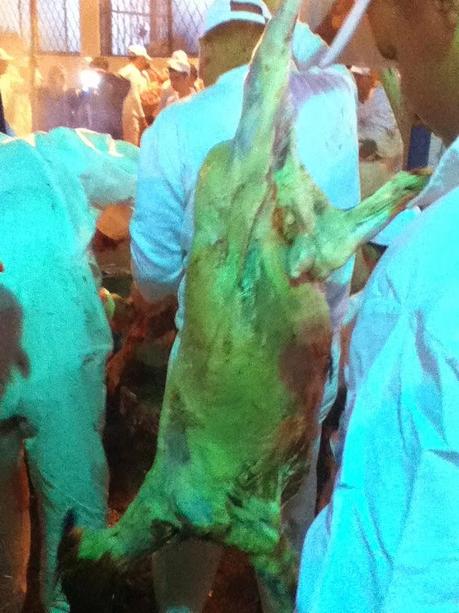
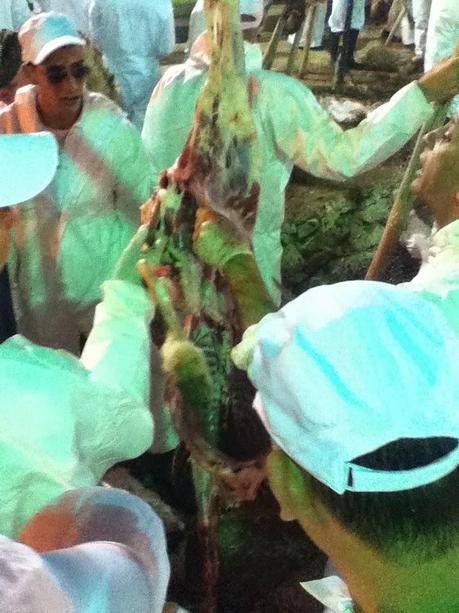
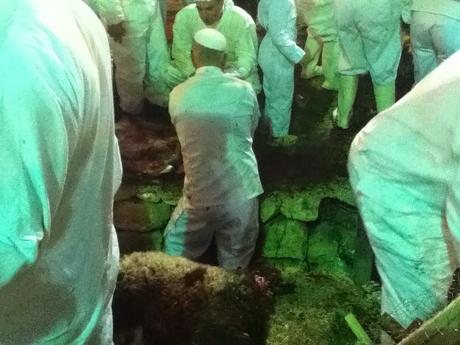
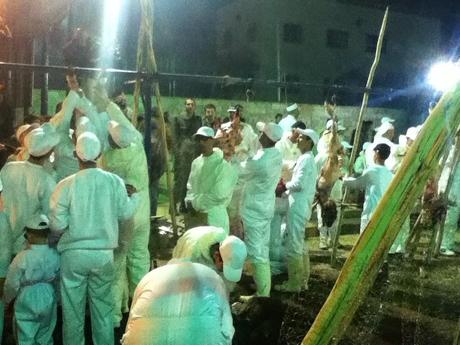
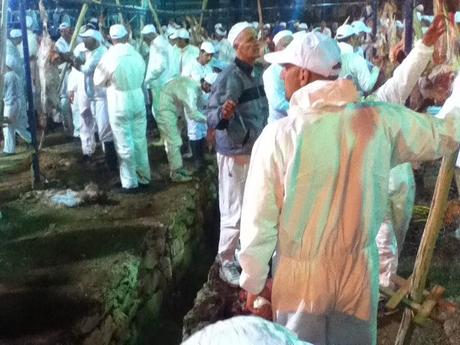
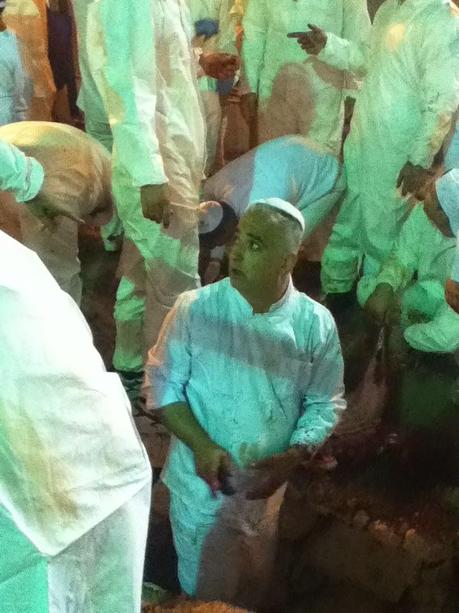
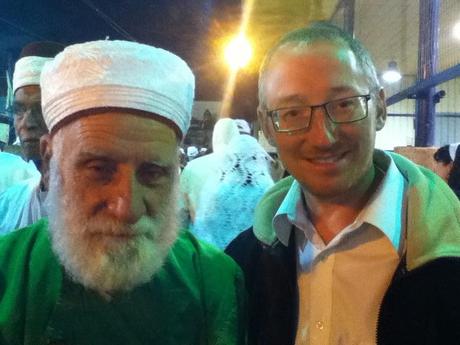
this is the "sgan kohen gadol" posing with me for a picture
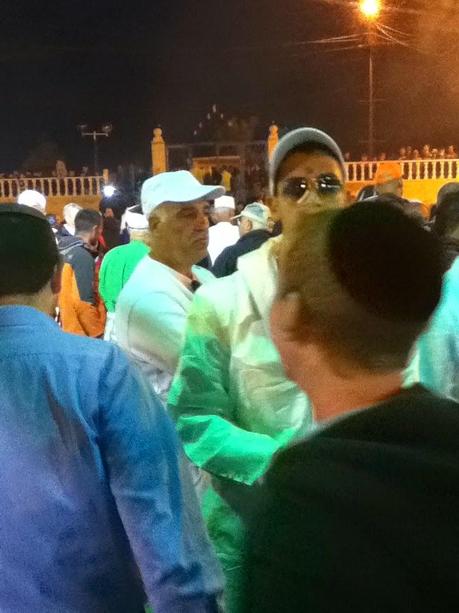
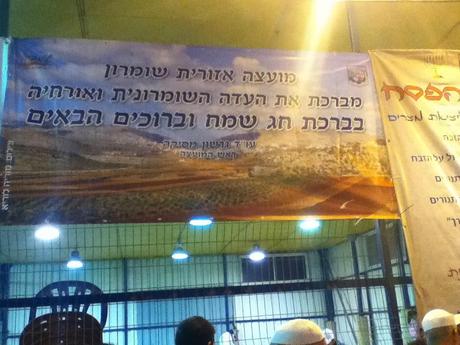
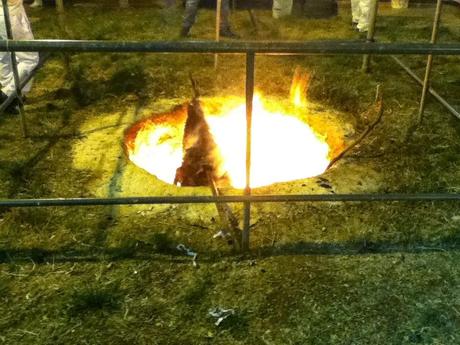
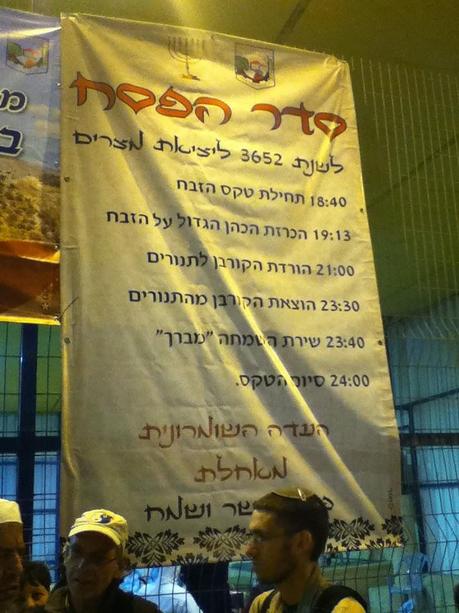
3652 years since leaving Egypt
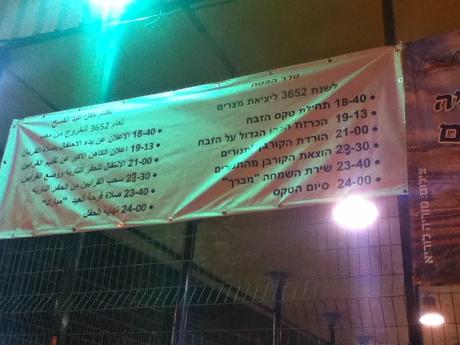
the following fellow, I think he said his name is Yefet, chatted with us for a long time after the slaughtering.. he says many years ago he learned in Ponevezshe Yeshiva, and Rav Shach knew he was a Shomronite. He also had a story about having met Rav Kanievsky , and Rav Kanievsky had wanted him to return to show him a document (I did not understand the entire story, so unfortunately I cannot retell it).. He also told us a story about how Rav Goren visited them and was supposedly impressed with their korban ceremony and had said that the Jews will have to come to them to learn how to do the korban pesach when it gets renewed.
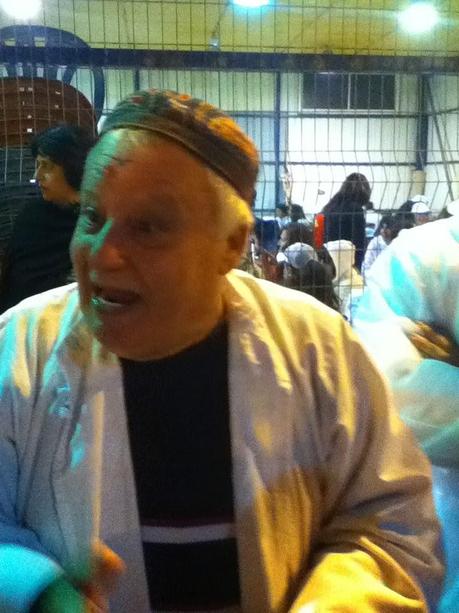
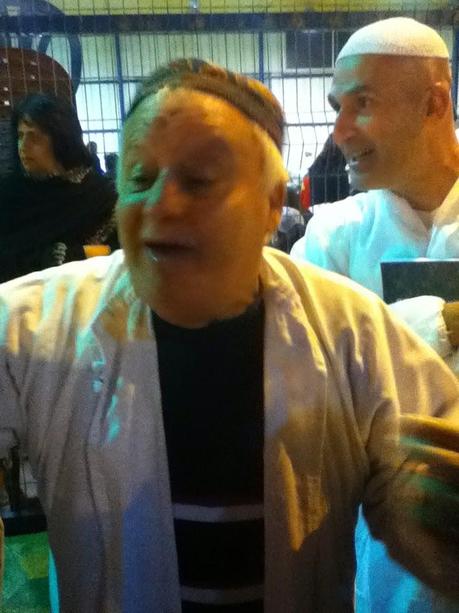
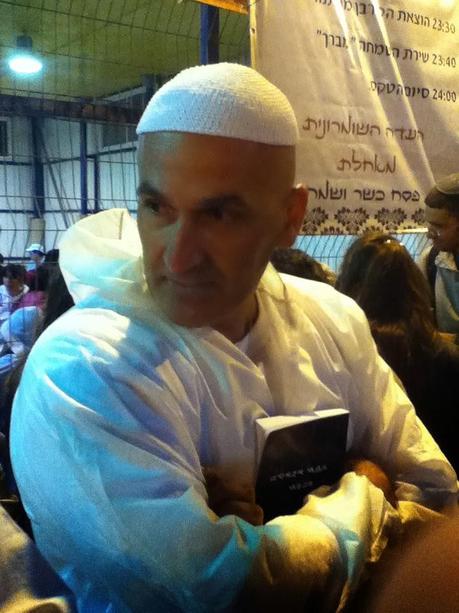
this fellow, also a "tourist", happened to be standing right there listening to our conversation. When he heard the name Rav Shach, he mentioned he is the doctor that operated on Rav Shach when he had cancer (colon? intestinal?).
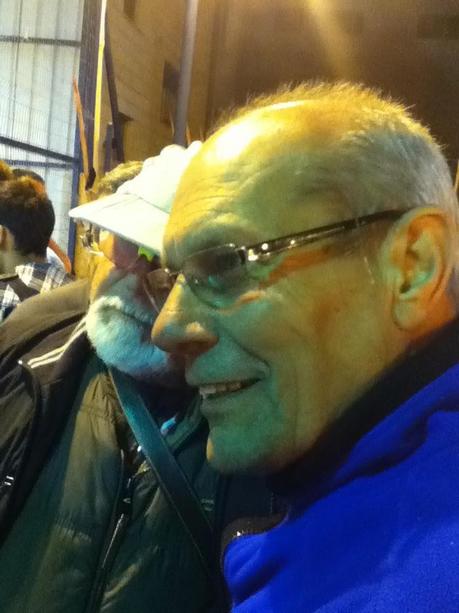
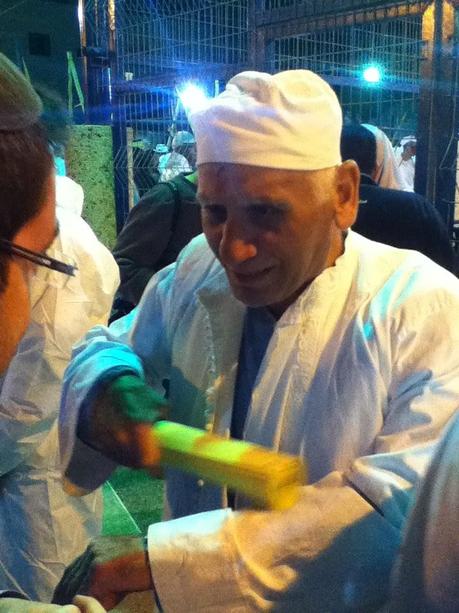
it might be hard to see because it is a small piece, but this is their matza. it is thin and looks like matza, but it is soft and flexible. This is one of the examples of tradition they have. He said they bake it in less than 18 minutes (but not always - sometimes it might take as much as 20 minutes)
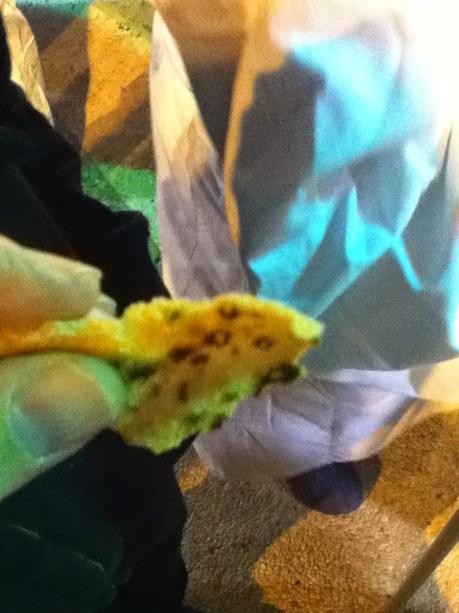
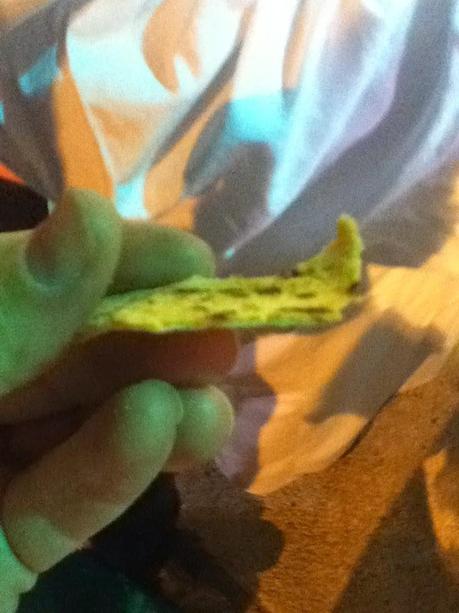
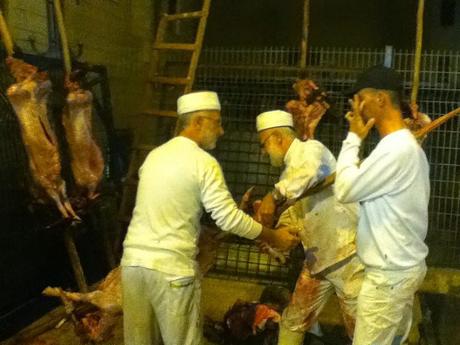
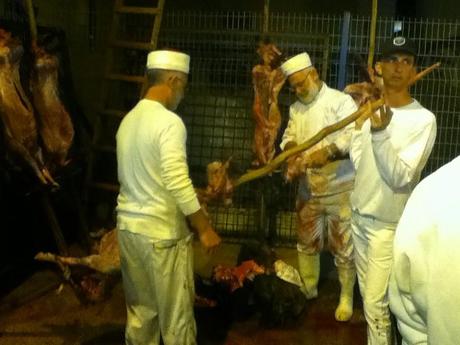
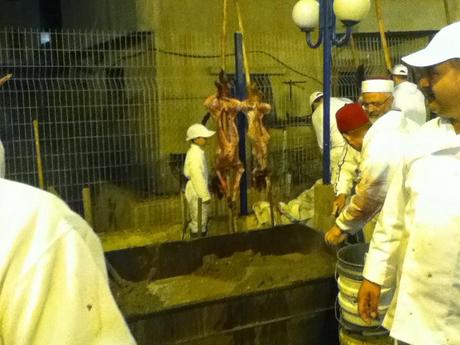
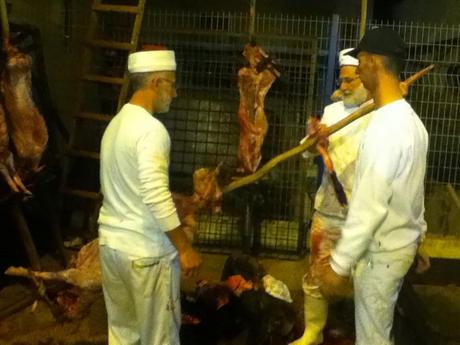
the segan kohen gadol talking to some tourists
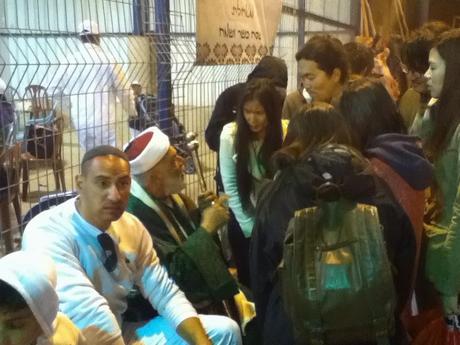
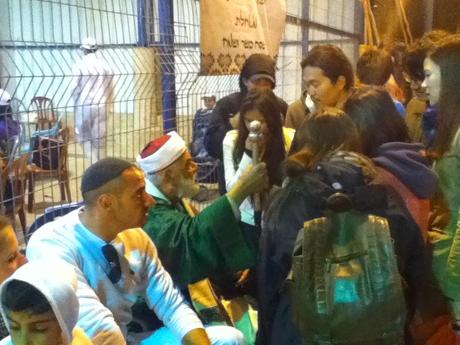

taxi! some kids offered a ride in this wagon calling it a cab...
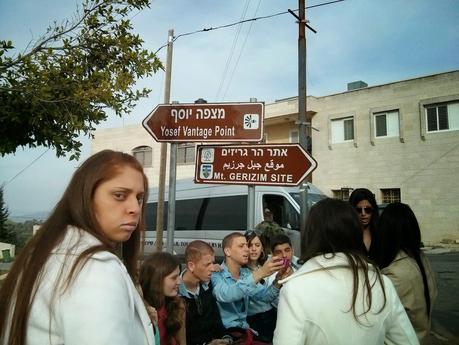
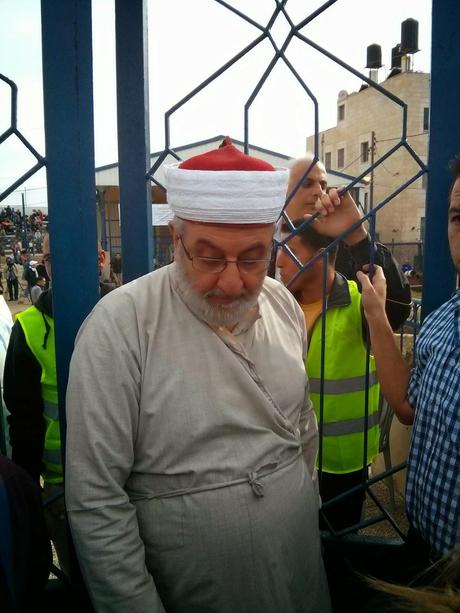
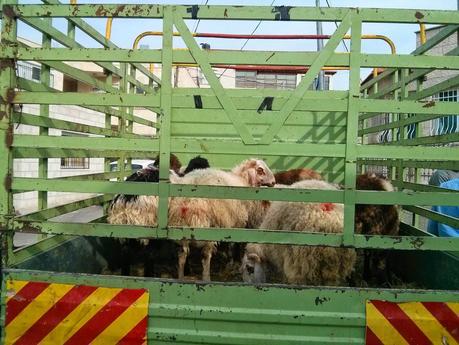
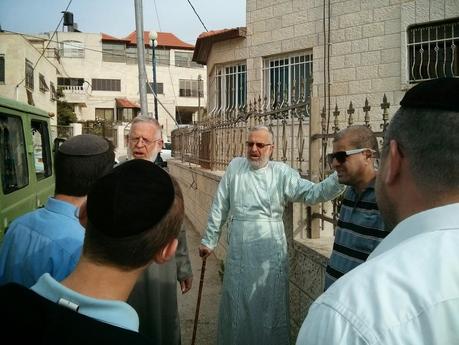
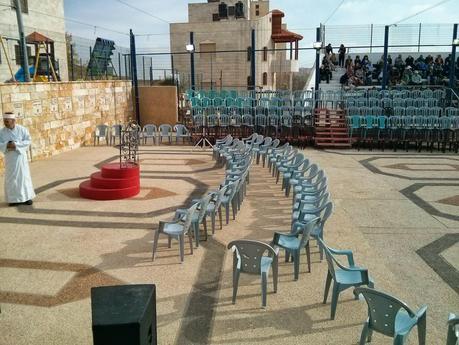
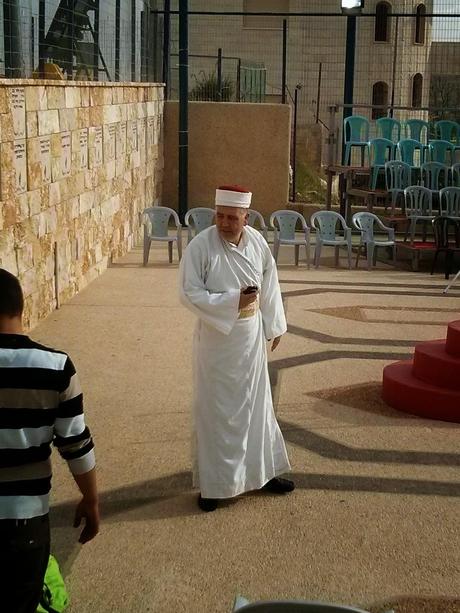
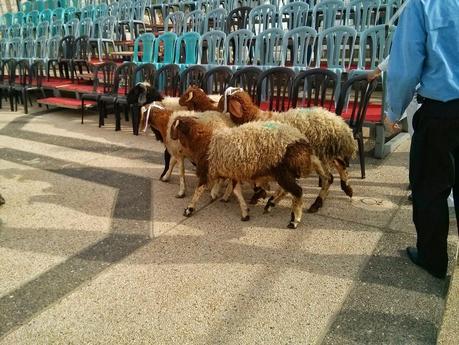
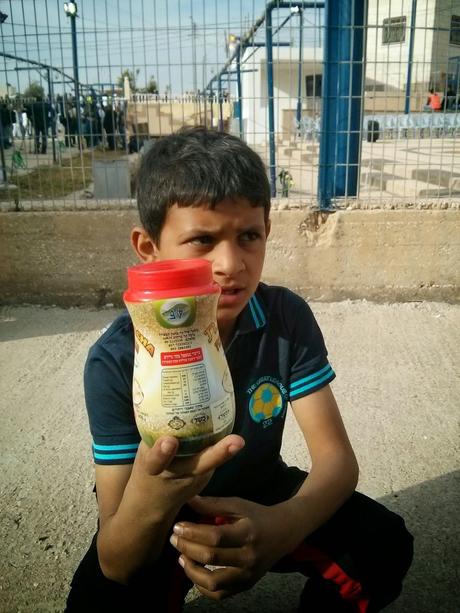
before the event, a couple kids were walking around selling things. this kid was selling bottles of tehina from Har Bracha

small world. even bumped into a friend there
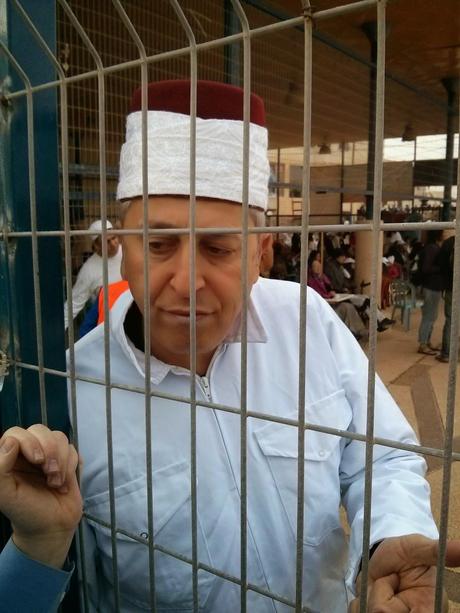
this fellows name was Yissochor, but his nickname is Shuki. explained a lot to us
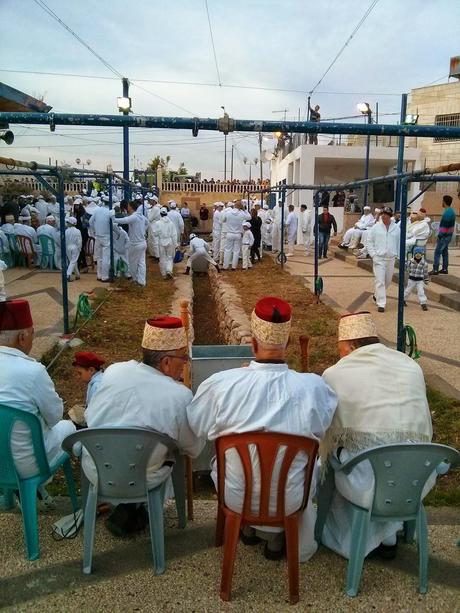
some elders sitting beside the altar
this is what they use for maror. it is called "chasa matzpen". It happens to be that a couple of my friends who have researched marror, independantly, have each come to the conclusion that this is the proper marror and have grown it in their yards to use for Pesach. I tasted this and it is very bitter. not sharp, not sweet - but bitter.

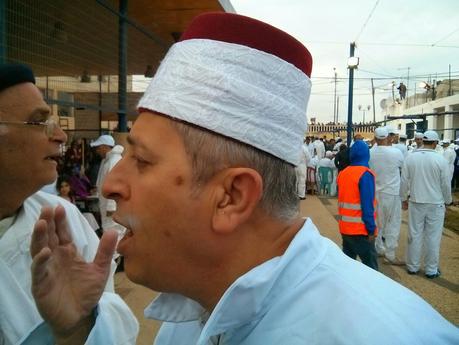
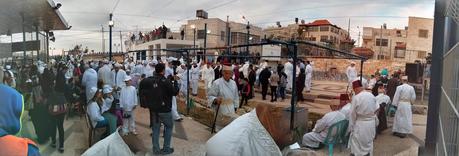

Shachar was also very knowledgeable and explained a lot to us

its hard to see, but the kohen gadol is sitting in the middle-front of the crowd, with a tallit over his head...
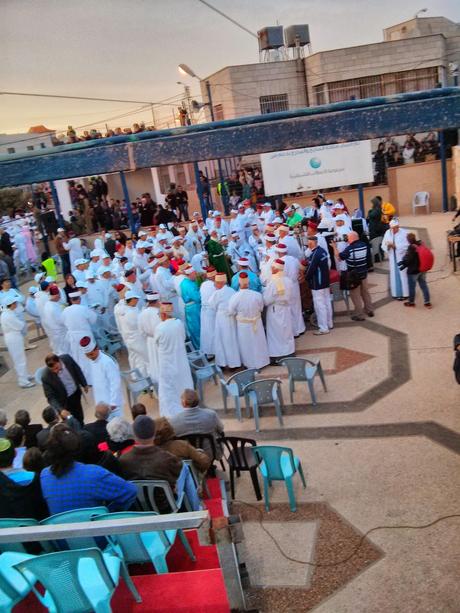
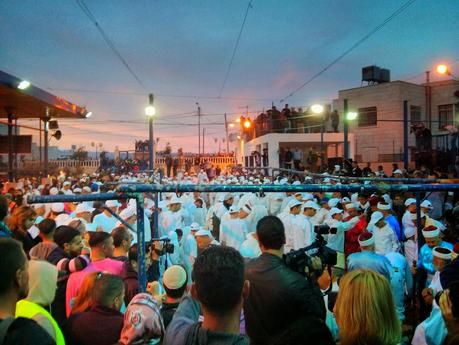
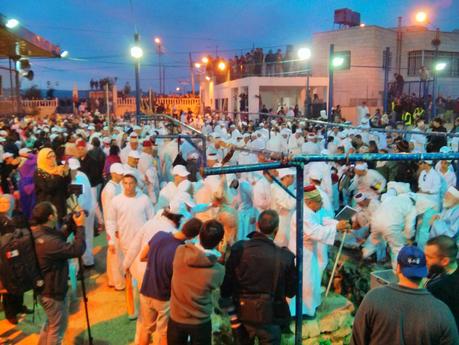
------------------------------------------------------ Reach thousands of readers with your ad by advertising on Life in Israel ------------------------------------------------------

posted on 05 July at 02:56